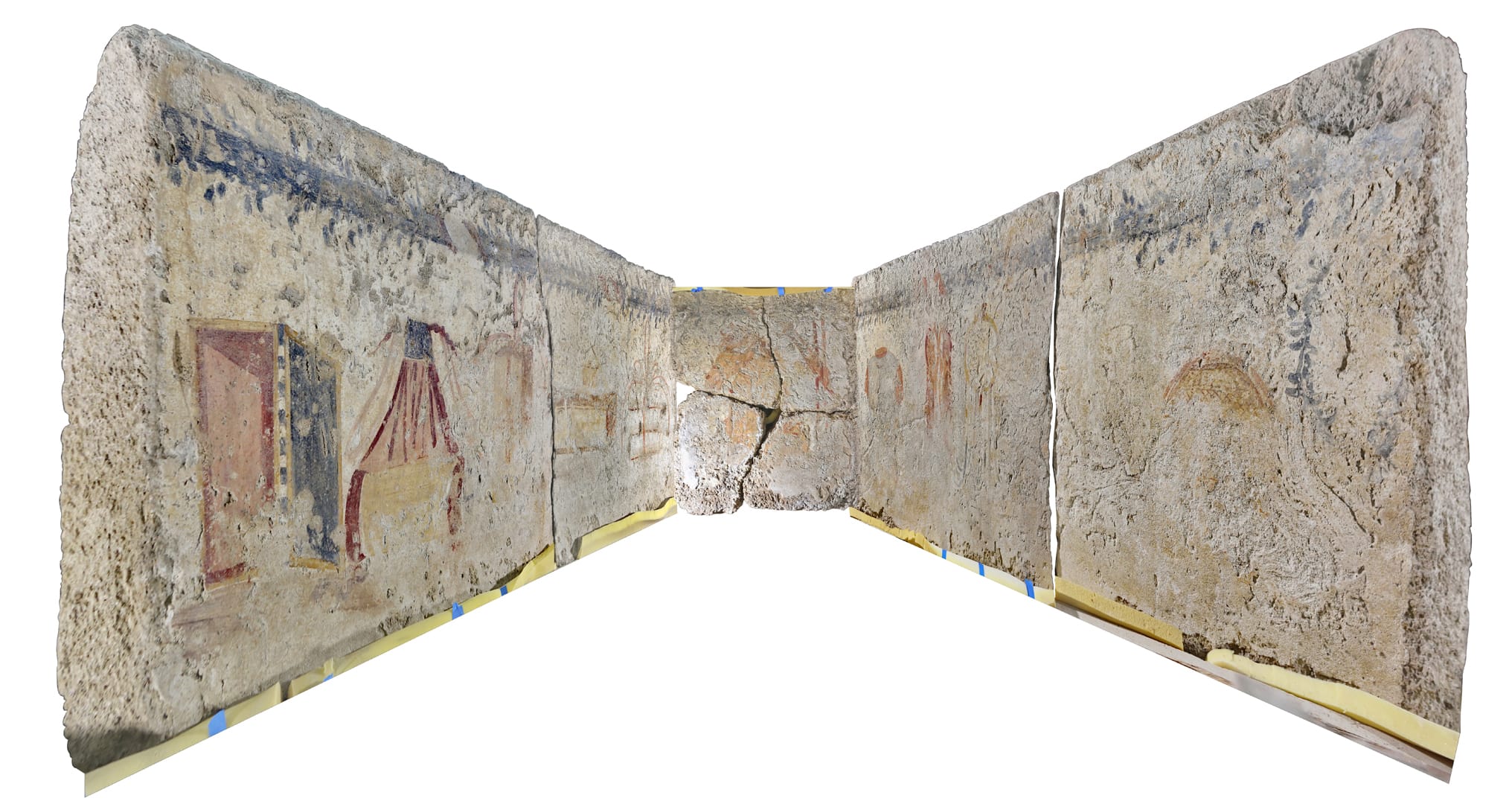Cist-shaped tomb from the necropolis of ancient Tanagra
This is a tomb from the necropolis of Tanagra, made of four slabs of poros limestone, which have polychrome paintings on their inner surfaces.
The upper part of all the sides of the tomb is occupied by a single continuous garland, the foliage of which is wrapped about with a double and wide red band, once on the narrow sides of the tomb and twice on its long sides.
On the narrow side A is represented the bust of a horse and the offensive weaponry of its rider, who is identified with the deceased. From the elements of the decoration, the latter appears to have been a cavalry officer; his attacking armament consisted of a kopis/knife held in a leather sheath.
On the long side D of the tomb is depicted the defensive armour of the deceased horseman, which follows the Macedonian pattern. The armament consists of a cuirass, probably of iron, a pair of greaves and a helmet of the Boeotian type. In addition to the defensive armour, five metal strigils are depicted, as well as a floral wreath.
On the narrow side B of the tomb is represented a kithara with 16 strings, showing that the deceased, to whom it apparently belonged, was also a skilled musician.
On the long side C of the tomb are depicted several writing instruments and materials, as well as boxes for their storage. There is a diptych folding board with a wax surface for note-taking; a bird-feather quill suitable for writing on papyrus; a semi-cylindrical storage cist in a net; a rectangular storage box placed vertically and tied with red ribbons ending in a bow; a rectangular chest on which is an inkwell with a metal stylus, a writing object for inscribing and erasing notes on the surface of the diptych board. Next to the chest are depicted three papyri scrolls rolled up into cylinders and placed horizontally one on top of the other, all tied together with a red ribbon also ending in a bow.
The illustrations of the tomb indicate that the deceased had served in life as an officer of the cavalry – either of the Boeotian army, if his origin was from Boeotia and or of the Macedonian, if he was a Macedonian, assigned to defend the city of Tanagra – and on the other hand his favourite occupations and skills providing information about his aristocratic origin.
The painted decoration is another example of the “Macedonization” of ancient Tanagra during the Hellenistic period. Τhe tomb dates back to the 3rd century BC.
